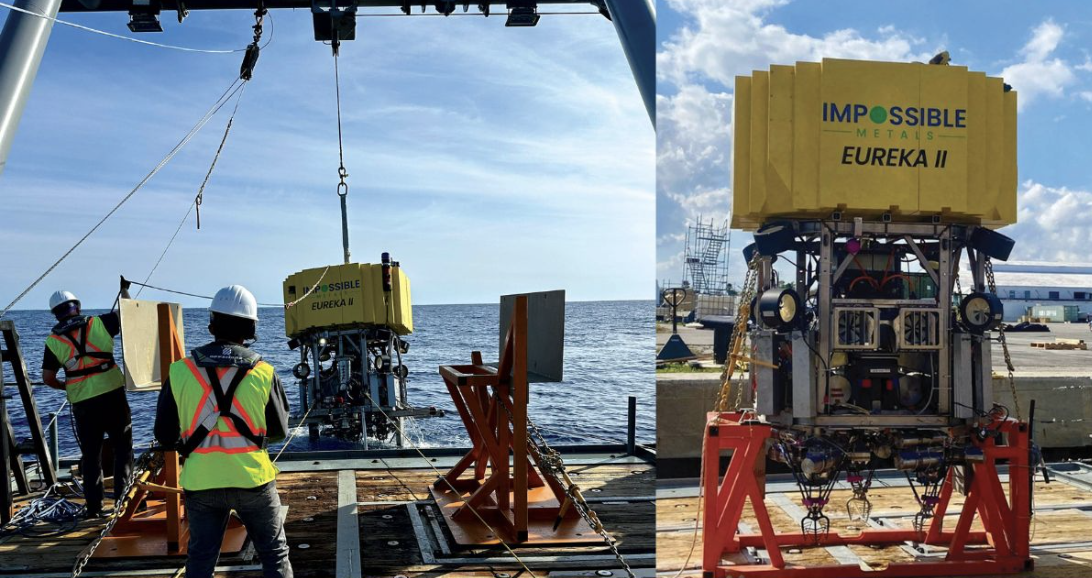Environment-First Robot Harvesting of Deep-Sea Nodules

Title: 2025 Report: Impossible Metals’ Next‑Gen AUV Technology for Sustainable Nodule Collection
Author / Sponsor: Oliver Gunasekara, Impossible Metals (OTC‑35952‑MS)
Date: May 2025
Report Length: 10‑page conference paper
BLUF: Impossible Metals proposes an autonomous selective-harvest system in which robotic vehicles pick individual polymetallic nodules, leave roughly thirty percent behind to protect the habitat, limit sediment plumes, and could supply battery-metal ore at a fraction of land-based mining costs. The company presents a phased roadmap that scales from lab prototypes to a full fleet capable of three million tons per year, anticipating that new seabed-mining rules will be in place by 2025.
The paper explains how artificial-intelligence-guided autonomous underwater vehicles recover nodules without scraping or digging the seafloor in prospective nodule fields of the Pacific Ocean. Surging demand for electric-vehicle batteries frames the business case by highlighting the importance of nickel, cobalt, copper, and manganese.
Eureka robots hover just above the seabed, use cameras and AI to identify nodules, and place them with robotic arms into onboard hoppers. Built-in software directs each robot to leave at least thirty percent of nodules untouched so hard-substrate species retain habitat. A smart launch and recovery system will automate the path between deck and deep water. A shallow-water prototype has demonstrated the payload system, a hundred-kilogram-payload vehicle will operate at full ocean depth, and a four-ton-payload model with twelve arms is under construction.
Light-touch collection avoids compacting the seabed and keeps most sediment in place. Real-time mapping helps robots steer clear of sensitive features, further reducing ecological disturbance.
Economic modeling suggests that about eighty such robots, supported by two surface vessels, could gather roughly three million tons of nodules per year, giving a projected operating cost up to fifteen times lower than comparable land-based mining because nodules contain multiple battery metals in one rock and require neither waste-rock removal nor blasting.
The authors argue that this technology could close a looming minerals gap as electric-vehicle demand surges and land deposits decline in grade or face lengthy permitting. They note that the International Seabed Authority aims to finalize exploitation rules in 2025, positioning Impossible Metals to move early under the new regulatory framework.
Immediate goals include finishing sea trials of the four-ton robot, completing the automated launch system, raising Series A financing, and scaling from pilot operations in 2027 to full fleet deployment that could generate about one billion dollars in annual revenue.
If these milestones are met, selective robot fleets may provide the battery industry with a practical, lower-impact source of nickel, cobalt, copper, and manganese just as global clean-energy markets accelerate.



